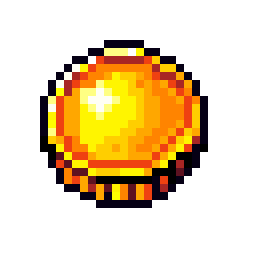Isometric Gray Cube Puzzle: Structured Design
This pixel art piece showcases a monochromatic, isometric Rubik's Cube rendered in shades of gray, highlighting its intricate segmented structure. The careful shading creates a sense of depth and a puzzle-like aesthetic.
Read More
The pixel art image depicts a single subject: a three-dimensional cube, constructed from smaller, individual cube-like segments. This object strongly resembles a Rubik's Cube, though it is not colored. There is no discernible pose or action, as the object is static and inanimate, presented as a straightforward representation.
The composition places the cube centrally within the square frame, with ample black space surrounding it, giving it prominence. It is rendered in an isometric perspective, showing three visible faces: the top, the front-left, and the front-right. Each face is further divided into nine smaller square segments, consistent with the standard 3x3x3 structure of a Rubik's Cube.
The background is entirely black and devoid of any environmental details, ensuring the focus remains solely on the central cube.
The color palette is predominantly monochromatic, relying on various shades of gray to create depth and definition. Specific colors include black (for outlines and the background), dark gray, medium gray, and light gray/white. The overall color scheme is muted and cool, with the contrasting shades of gray effectively simulating light and shadow on the segmented surfaces. The top face appears brightest, suggesting an overhead light source, while the side faces are rendered with darker tones, creating a sense of volume.
The overall vibe evoked by the image is neutral and precise, leaning towards a logical or puzzle-like aesthetic. It suggests an object that is structured, mechanical, and perhaps challenging. There are no elements that convey strong emotion or narrative.
In terms of details, each individual square segment is meticulously outlined in black, separating it from its neighbors and enhancing the grid-like appearance. The shading on each small segment is also carefully applied, with a brighter pixel or two at the "corner" of each square (where the imaginary light hits), contributing to the illusion of three-dimensionality even at this low resolution. The consistency of the shading across all visible faces of the larger cube gives it a unified and metallic or stone-like texture.
 0
0
